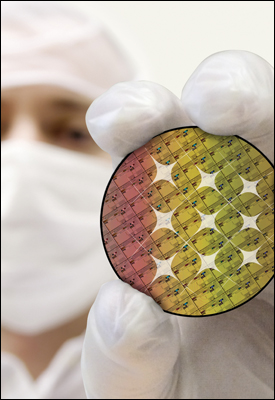Case Study: Semiconductors
Case Study: The Semiconductor Industry
 Innovations in the semiconductor industry have led to dramatic advancements in manufacturing. And, dramatic shortcomings. Innovations in the semiconductor industry have led to dramatic advancements in manufacturing. And, dramatic shortcomings.
The Futrfab environment represents a revolutionary solution for the industry’s small volume manufacturing problems. Small tools may be deployed in manufacturing plants (fabricators) with comparatively tiny footprints. The patented technology will foster innovations in design, enable small volume manufacturing and – ultimately – fuel an industry wide revolution.
Futrfab’s unique ‘Cleanspace’ technology reopens affordability for all scales of production, delivering superior work processes and dramatically decreased development cycle times rationalized to small volume needs for all customers. It is an affordable, small volume manufacturing platform that will empower innovation instead of chaining it. Futrfab will play a similar role in the upcoming Integrated Circuit (IC) revolution as the PC played in the Personal Computer (PC) Revolution.
|
About Semiconductor Manufacturing
Semiconductor device fabrication is the process used to manufacture the integrated circuits present in electrical and electronic devices. It is a multiple-step sequence of photolithographic and chemical processing during which electronic circuits are formed upon highly polished wafers made of pure semiconducting material (silicon) about 0.75 mm thick.
The process is performed in highly specialized fabrication facilities referred to as fabricators, or ‘fabs’. Typically, the final product’s entire manufacturing process, from start to packaged chips ready for shipment, encompasses several months.
Although the birth of semiconductors can be traced to a much earlier date, it’s widely accepted that the integrated circuit industry emerged around 1960, once design and fabrication of complex semiconductor devices became a viable business.
Fifty years later, design and fabrication of semiconductor devices has grown to approximately $250 billion worldwide. The industry enables the generation of some $1.2 trillion in electronic systems business and $5 trillion in services, representing close to 10% of the world’s GDP. 1
|


